On June 30, 1857, James Oliver filed a patent application for chilling the wear face of cast-iron moldboard plows. While pouring molten cast iron in sand molds he circulated hot water through chillers to regulate the rate of cooling. Oliver's control of raw material content and cooling produced moldboards with a very hard surface and a softer, tough inner core for strength. Their fine textured wearing faces of uniform hardness maintained a mirror polish and resisted rust.
2008
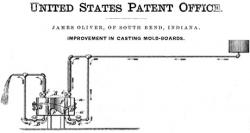

In 1894, Dr. John Harvey Kellogg and his brother, Will Keith (W.K.) Kellogg, were making a granola type cereal for their patients in the Battle Creek Sanitarium, a general health facility in Michigan. This granola cereal was made from wheat that was boiled, rolled into a sheet, toasted, and ground. They accidentally left a batch of boiled wheat stand overnight before passing it through the rolls. The individual grains were subsequently pressed into flakes which were toasted to form the first flaked cereal. Two years later, W.K. Kellogg made the first corn flakes.
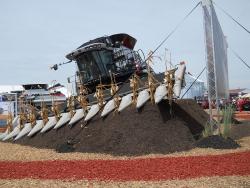
In 1941, near Palouse, Washington, Raymond A. Hanson conceived of a self-leveling mechanism for hillside combines. On the steep hills in the Pacific Northwest, leveling is necessary to save grain because of the gravity grain separation mechanism. Before the Hanson invention, manual leveling required a person to stand on the combine platform and adjust the machine to the lay of the land - a hot, tedious job. The grain-saving attributes of Hanson's invention were probably more important than the labor saving, although both were valuable.
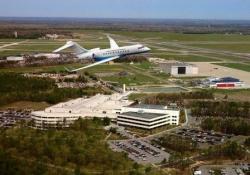
This Federal Laboratory has played a pivotal role in creating our modern air traffic control system. Established as the National Aviation Facilities Experimental Center in 1958, the Technical Center’s research and engineering achievements, and its direct support to airports and FAA air traffic control facilities have led to the highest level of safety in air transportation.

The 1940 Air Terminal is a beautiful and rare example of classic art deco airport architecture from the golden age of flight. Designed by noted architect Joseph Finger, the Terminal was built to meet Houston’s growing role as a major center for air commerce in the 1930s. Its grand opening by the City of Houston took place on September 28, 1940, at Houston Municipal Airport, now known as Hobby Airport.

Developed by Rohm and Haas in the 1940s, water-based acrylic emulsion technology filled a need for easy-to-use household paints for a growing suburban population in the United States following World War II. This aqueous technology required less preparation to use, was easier to clean up, had less odor, and performed better than or equal to paints made with solvents. It was also a leap forward in acrylic chemistry.
Era_date_from:

On 24 December 1906, the first radio broadcast for entertainment and music was transmitted from Brant Rock, Massachusetts to the general public. This pioneering broadcast was achieved after years of development work by Reginald Aubrey Fessenden (1866-1932) who built a complete system of wireless transmission and reception using amplitude modulation (AM) of continuous electromagnetic waves. This technology was a revolutionary departure from transmission of dots and dashes widespread at the time.
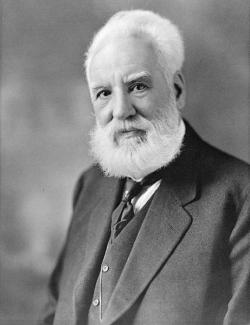
On 10 August 1876, Alexander Graham Bell demonstrated on this site that the human voice could be transmitted electrically over distance. While family members spoke into a transmitter in Brantford, 13 km away, Bell was able to hear them at a receiver located in Paris. This test convinced Bell that his invention could be used for communication between towns and could compete successfully with the telegraph.
The 1.5 mile Lacey V. Murrow Bridge was the largest floating structure in the world and the first to be built of reinforced concrete when completed in 1940. The bridge consisted of typically 300-foot long pontoons floated to site and rigidly connected to form a continuous structure and incorporated a unique floating concrete draw-span to allow for passage of marine traffic. The original floating structure, constructed by Pontoon Bridge Builders, was accidentally sunk in 1990 during a major renovation effort and was replaced by 1993.

With the discoveries of South Africa's diamonds in the 1860s and gold in the 1880s, immigrants flooded into Cape Town and changed it into a major commercial center. Unfortunately, its water supply had not kept pace with the population growth. After several droughts and years of inadequate water supply, the Woodhead Tunnel was constructed between 1887 and 1891. When it failed to solve the water shortage problem, the Municipality of Cape Town determined that a dam and reservoir needed to be built.
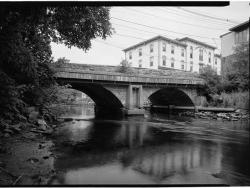
The Choate Bridge of Essex County, completed in 1764, is the oldest documented two-span masonry arch bridge in the United States. Named after Colonel John Choate, who supervised the construction, the bridge is located on South Main Street and spans the Ipswich River. Originally, the bridge…
Read More

Originally known as the Coolgardie Goldfields Water Supply Scheme, the Goldfields Water Supply, Western Australia, has exceptional and unique cultural significance for Australia. Western Australia's first Premier, the dynamic and visionary Sir John Forrest, recognized the need for this…
Read More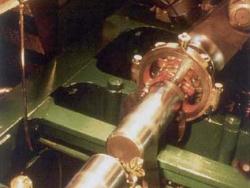
The oscillating steam engine, built by John Penn & Sons, is located aboard the famed paddle steamer Diesbar. Diesbar is the second oldest of a fleet of nine paddle steamers in Dresden. What makes the Diesbar unique is its coal fueled engine and single deck design. The John Penn and Sons…
Read Morehe Automatic Temperature Control System was named as a Historic Mechanical Engineering Landmark in 2008. Warren S. Johnson came up with the idea for automatic temperature control while teaching at Normal School in Whitewater, Wisconsin in the 1880's. Originally, janitors would have to enter each…
Read More
With the discoveries of South Africa's diamonds in the 1860s and gold in the 1880s, immigrants flooded into Cape Town and changed it into a major commercial center. Unfortunately, its water supply had not kept pace with the population growth. After several droughts and years of inadequate water…
Read MoreThe 1.5 mile Lacey V. Murrow Bridge was the largest floating structure in the world and the first to be built of reinforced concrete when completed in 1940. The bridge consisted of typically 300-foot long pontoons floated to site and rigidly connected to form a continuous structure and…
Read More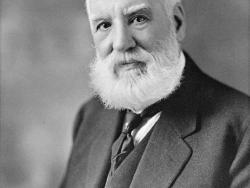
On 10 August 1876, Alexander Graham Bell demonstrated on this site that the human voice could be transmitted electrically over distance. While family members spoke into a transmitter in Brantford, 13 km away, Bell was able to hear them at a receiver located in Paris. This test convinced Bell…
Read More
On 24 December 1906, the first radio broadcast for entertainment and music was transmitted from Brant Rock, Massachusetts to the general public. This pioneering broadcast was achieved after years of development work by Reginald Aubrey Fessenden (1866-1932) who built a complete system of wireless…
Read More
Developed by Rohm and Haas in the 1940s, water-based acrylic emulsion technology filled a need for easy-to-use household paints for a growing suburban population in the United States following World War II. This aqueous technology required less preparation to use, was easier to clean up, had…
Read More
The 1940 Air Terminal is a beautiful and rare example of classic art deco airport architecture from the golden age of flight. Designed by noted architect Joseph Finger, the Terminal was built to meet Houston’s growing role as a major center for air commerce in the 1930s. Its grand…
Read More
This Federal Laboratory has played a pivotal role in creating our modern air traffic control system. Established as the National Aviation Facilities Experimental Center in 1958, the Technical Center’s research and engineering achievements, and its direct support to airports and FAA…
Read More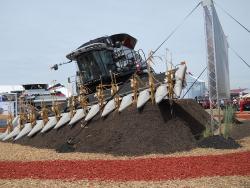
In 1941, near Palouse, Washington, Raymond A. Hanson conceived of a self-leveling mechanism for hillside combines. On the steep hills in the Pacific Northwest, leveling is necessary to save grain because of the gravity grain separation mechanism. Before the Hanson invention, manual…
Read More
In 1894, Dr. John Harvey Kellogg and his brother, Will Keith (W.K.) Kellogg, were making a granola type cereal for their patients in the Battle Creek Sanitarium, a general health facility in Michigan. This granola cereal was made from wheat that was boiled, rolled into a sheet, toasted,…
Read More
On June 30, 1857, James Oliver filed a patent application for chilling the wear face of cast-iron moldboard plows. While pouring molten cast iron in sand molds he circulated hot water through chillers to regulate the rate of cooling. Oliver's control of raw material content and…
Read More

